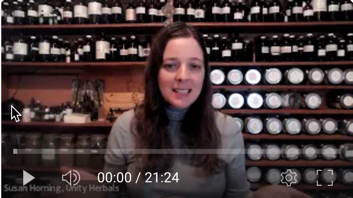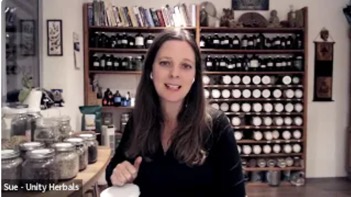Read the edited and published version on HeadplusHeart.com!
Dragging myself through a funk, I languish around the house washing dishes and spot cleaning surfaces. I’m acutely aware of my inner mind’s agitation, and my body is restless and stressed. I mention it to my partner and he says mildly “maybe it’s your hormones?”, and at that moment I feel like I’m going to snap into a rage, and I remember my period is due. He’s right, but how can he be so candid about my hormonal balance when he has NO idea what it’s like to live through mood fluctuations, a heavy menstrual bleed, or the feeling of walking around with an extra 10 lbs of water weight in your pelvis, or a fetus for that matter? Not that men can’t be compassionate (and my partner is), but I’m not sure they truly empathize with the multitude of hormonal issues that women face at so many stages in life. It can be hard to be a woman, but with a few simple tools we can make it easier on ourselves!
From menarche to menopause, there are a plethora of reasons that our hormones can be out of balance in our society. Environmental toxins from pollution in our cities, additives in our cleaning and body care products, use of plastics, unclean drinking water, and even the food we eat can throw our delicate hormonal system out of balance. Daily stress also takes its toll, especially for today’s ‘superwoman’ who may be working long hours, caring for a family, and managing a social life or garden plot. Our ‘fight or flight’ sympathetic nervous system response can mean we neglect our reproductive and digestive needs, and when our system is stimulated by stress and daily demands, we may not be able to take a ‘three day holiday’ each month to rest. Many of us end up surrendering to ‘hormonal controllers’ such as the birth control pill to effectively set and control the amount of hormones in our system, or resort to drastic surgical measures to get things under control (there are cases where surgery is absolutely necessary).
The question is, how can we harmonize with nature to support and optimize our reproductive health, and help us through life’s transitions from maiden, to mother, to crone? What tools are there to help our endocrine system and reduce our risk of hormonal-related problems such as PMS, uterine fibroids, ovarian cysts, PCOS, endometriosis, polycystic breast disease, cervical hyperplasia, cancer, and more? Is there something beyond what drug stores and orthodox medicine may have to offer? While ‘allopathic’ strategies focus on quantitative measurements to take control our blood hormone levels or surgical excision of offending tissues, there are other solutions out there that may have a more qualitative approach to managing common symptoms.
Somewhere between food and medicine there is a field. In that field grows a plethora of botanicals – leaves, flowers and roots – many of which have been used for centuries by native communities to care for, heal, and support reproductive and hormonal health, but this isn’t something that is commonly talked about in our doctor’s offices when we’re getting a prescription for oral contraceptives. It’s something that we’ve had growing at our feet all along – the companion of an ageless old friend, Mother Nature.
It must be noted that diet is extremely important to hormonal health, with excessive amounts of caffeine showing a direct correlation to the development of uterine fibroids, and cruciferous vegetables showing a link to our estrogen and thyroid levels. Fibre plays a huge role in hormonal clearance from the intestines, and a lack of dietary fibre (constipation) can cause reabsorption of these offending hormones, circulating them instead of excreting them. Gut health and our microbiome must be considered with hormone balancing as a major part of our ‘wholistic’ system, not just a sum of its parts. This points directly back to what we are consuming, as regular use of antibiotics can wreak havoc on our natural gut flora. Pre-biotic foods like leeks, onions, garlic, and bananas as well as fermented foods like kimchi, miso or sauerkraut can be great ways to help restore out-of-balance gut flora, and this may be necessary before our hormones can come into balance. The direct link between the gut and the hormonal system cannot be understated.
Symptoms of hormonal imbalance are often related to the balancing act between our main sex hormones, estrogen and progesterone. More often than not, the scale is tipped toward the ‘estrogen dominant’ side, which may affect our cycle length, as well as our endometrial thickness. Phytoestrogens are one plant class that we use to describe plants containing estrogen-like substances, constituents such as isoflavones and lignins (found in flax seed). By acting like endogenous estrogen, these plant substances (although much weaker) are able bind to estrogen receptor sites and effectively ‘turn down’ the levels of circulating estrogen. This can be of benefit in both estrogen dominant and estrogen-deficient states, making them one of the most useful and versatile options for hormonal balancing. Soy is one of our best food examples in this plant class, a wonderful protein-rich legume, best consumed when it’s organic, unprocessed, and fermented, like tempeh. Yum!
Other phytoestrogens include Red clover (Trifolium pratense), which you may have seen growing in a park in your neighbourhood with it’s beautiful pink flowers, Hops (Humulus lupulus) which is found in beer (cheers!), and Chaste Tree Berry (Vitex agnus-castus) which may be the most widely used plant ally for hormone imbalances. When we consume phytoestrogens, our body sends feedback to the hypothalamus and pituitary to alter the production of these hormones at the source, nudging our body back into balance. Chaste Tree Berry in particular can be used for hormonal modulation in the botanical treatment of fibroids (benign uterine tumours), which are common in 20-40% of menstruating women. As a dopamine agonist, it acts directly on the pituitary to reduce prolactin release, which may play a role in fibroid growth. It can also help balance the mood in cases of PMS, reduce mastalgia (breast pain), stabilize the hormonal system when coming off birth control pills, balance irregular menstruation, and help stimulate milk production in new mothers. No wonder it’s the most widely used plant for women’s hormones at all stages.
Not just hormone balancers, other useful natural plant allies work as tonics for our system (improving tone and function). These include Raspberry Leaf (Rubus ideaus), Shepherd’s purse (Capsella bursa-pastoris), Witches Herb (Alchemilla monicola), and Yarrow (Achillea millefolium) for their ability to reduce excessive uterine bleeding (mennorrhagia) by their astringent and tonic effect on the uterus. Black Cohosh (Cimicifuga racemosa) is a primary herb for menopause and a soothing nervous system relaxant, but can also aid fertility, reduce premenstrual headaches/migraines, regulating and normalizing hormone balance, particularly in menopause. Dan Gui (Angelica sinesis) is known by the Chinese as ‘the women’s ginseng’ acts as a powerful anti-inflammatory but has been used in TCM for centuries for women’s health to boost energy and strength following childbirth.
The health of our liver (the largest gland in the body) determines how effectively hormones are cleared from our system, as it is directly responsible for manufacturing the building blocks necessary for hormonal production. Herbs that work on the liver and bile system are called choleretic (increase bile flow) or cholagogue (increase bile volume) and act through what’s known as ‘the bitter principle’. Chammomile (Matricaria recuitita), Dandelion Root (Taraxacum officinalis) the Chinese herb Schizandra (Schizandra chinensis), and Mugwort (Artemesia vulgaris) acts as emmenagogues, helping encourage expulsive activity of the uterus to start or increase menstrual flow. These bitter plants have a direct effect on period pain, especially for congestive, hot-headed irritable conditions as the bitter flavour acts to cool and boost elimination. These herbs also have been traditionally used by herbalists to care for women before and after child birthing, and have a valued role in digestion to support irritable bowel and constipation.
While it may be tempting at first to treat botanicals like drugs, their behaviour in our bodies is decidedly different and milder than our medical counterparts. For this reason, botanicals should be taken more often and sometimes at higher doses to reap their rewards. To do this, we need to start to change how we treat our bodies – boiling the kettle for tea, rather than popping a pill. Integrative medicine is now focused on the collaboration between herbs and drugs, rather than an either/or dynamic which has historically separated fields of quality care in our communities.
Noticing the complexities of the many aspects of our health, I recognize a similar complexity found in nature, and I trust that women’s bodies are naturally connected to the world around us – the phases of the moon, the turning of the tides. Although I suspect men have this connection too, it seems more pronounced in me each month and it makes me wonder if as wise women we have a responsibility to honour this connection. I trust Mother Nature’s care is a gift that can integrate with my body easily, and as a conscious citizen of the planet, I see it as part of my role to include botanicals as a valuable ally for my health. With a slight shift in my perspective, I feel grateful for the gift it is to be a woman!
References and Further Reading:
Gladstar, Rosemary. Herbal Healing for Women, 1993.
Romm, Aviva. Botanical Medicine for Women’s Health, 2010.
Tricky, Ruth. Women, Hormones and the Menstrual Cycle, 2011.






